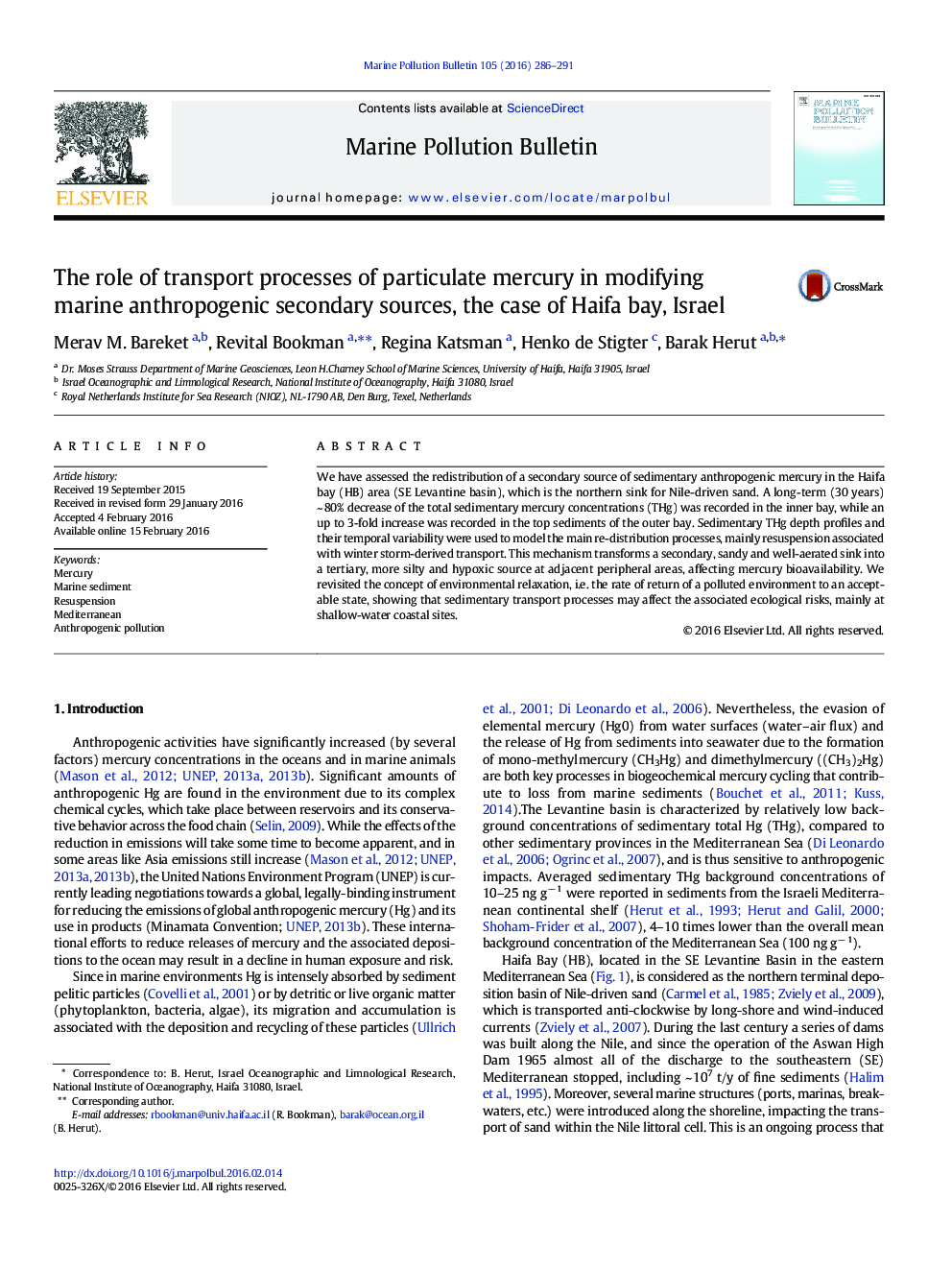| Article ID | Journal | Published Year | Pages | File Type |
|---|---|---|---|---|
| 4476541 | Marine Pollution Bulletin | 2016 | 6 Pages |
•Resuspension processes of particulate mercury modify marine secondary sources.•Shallow water coastal sites reveal changes in anthropogenic mercury distribution.•Sediment transport processes of mercury affect associated ecological risks.•Environmental relaxation is valid when mercury burial is terminal.
We have assessed the redistribution of a secondary source of sedimentary anthropogenic mercury in the Haifa bay (HB) area (SE Levantine basin), which is the northern sink for Nile-driven sand. A long-term (30 years) ~ 80% decrease of the total sedimentary mercury concentrations (THg) was recorded in the inner bay, while an up to 3-fold increase was recorded in the top sediments of the outer bay. Sedimentary THg depth profiles and their temporal variability were used to model the main re-distribution processes, mainly resuspension associated with winter storm-derived transport. This mechanism transforms a secondary, sandy and well-aerated sink into a tertiary, more silty and hypoxic source at adjacent peripheral areas, affecting mercury bioavailability. We revisited the concept of environmental relaxation, i.e. the rate of return of a polluted environment to an acceptable state, showing that sedimentary transport processes may affect the associated ecological risks, mainly at shallow-water coastal sites.
